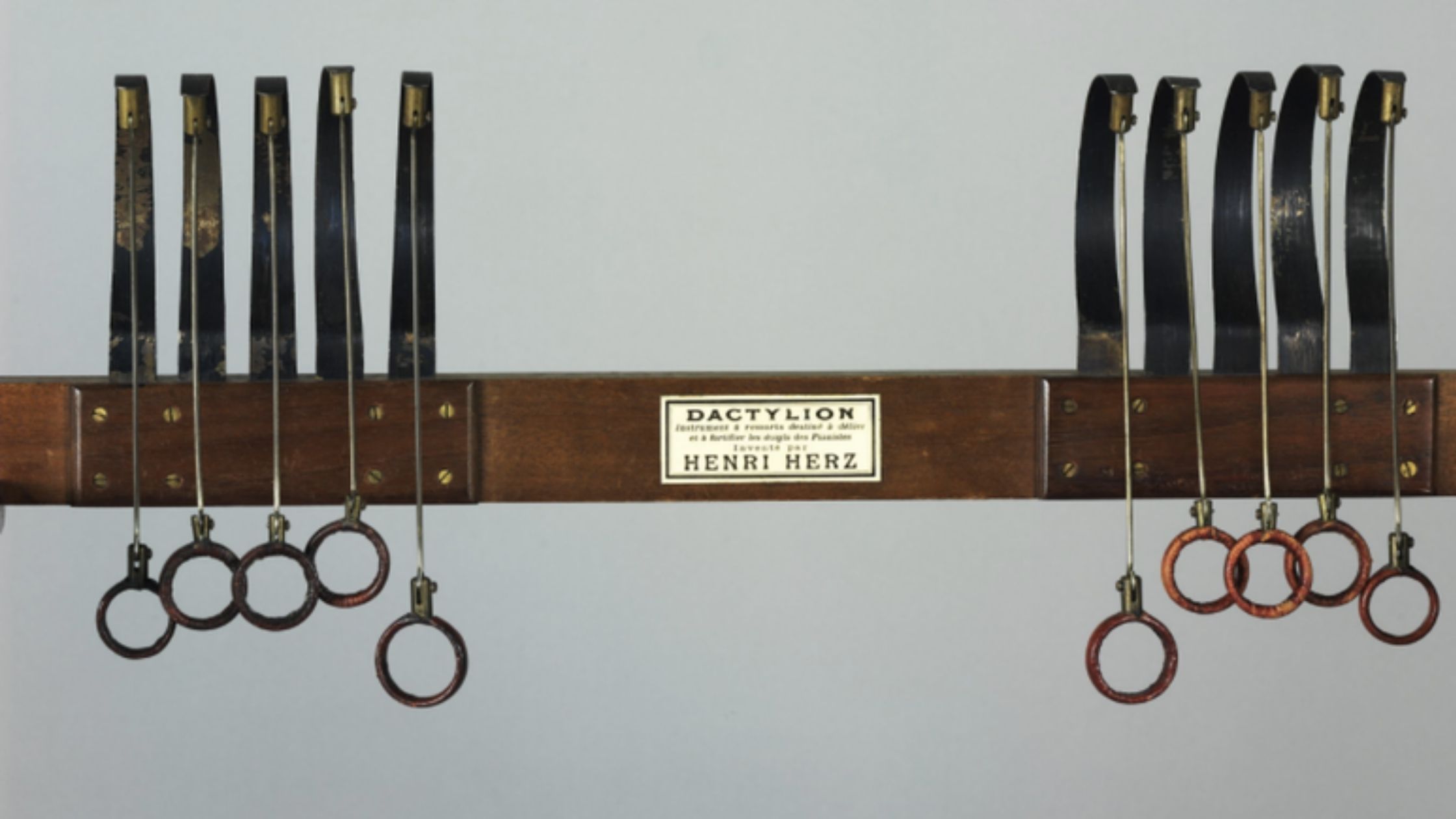
About the Author
Monica Chen is a native Taiwanese violinist and the first practitioner of dystonia in Asia. She has a DMA in violin performance and currently working as an assistant professor at Taipei National University of Arts. Monica studied with Dr. Farias, a leading specialist treating dystonia with movement therapy. She is also the Chinese translator of Dr. Farias‘ book, ‘Limitless’.
Open google search and type ” finger independence training”. Almost all search results are related to musical instrument performance, and every search result tries to emphasize the importance of finger independence for performance; however, can fingers really achieve independence? Or, is such independence just an illusion?
In the history of music, the most famous example of the pursuit of finger independence is the romantic composer Robert Schumann (1810-1856). In his diary from 1831-32, Schumann recorded his own piano practice in detail, including that time when he could not control the middle finger, so he had to play with a high wrist position (a compensatory way of playing), and even later invented a hanging device, which he named “Cigar mechanics”, was used to raise the disobedient middle finger. In his Toccata op. 7 which he composed at that time. We can observe that he deliberately avoided using the middle finger of his right hand when writing. In fact, according to Schumann’s description in his diary, his finger problem should be dystonia, rather than various diseases (tendinitis, strain, sequelae of syphilis treatment, etc.) that many scholars have guessed in the past.[1]
The idea of using a device like Schumann to increase the independence of the fingers was not new in the early nineteenth century. The trend of dazzling techniques that swept through the 19th century brought a craze in the pursuit of techniques and indirectly increased the player’s demand for finger independence, which has continued to this day. French pianist Henri Herz (1803-1888) designed a mechanical device “Dactylion” (pictured above) in order to maximize the player’s finger independence, as an auxiliary device for training finger independence (It is more like a torture device!), and applied for a patent in 1836.
Does the belief about the independence of human fingers truly exist?
In 2016, there was a study on finger independence.[2] The study required thirteen young and healthy subjects[3] to perform single and multi-fingers movements, using active finger flexion to observe the responses of other fingers. The fingers were actively flexed to observe the reactions of other fingers. The results of the study show that if subjects are required to bend their actively flexed fingers all the way to the palm, no fingers can operate independently in such a maximum range, and the effect of restraining the middle finger and ring finger is particularly obvious. Although the fingers cannot maintain independence in the maximum range, each finger can maintain independence in a specific range, that is, a smaller range. Such specific range will vary according to different fingers and individuals.
Since the fingers can only remain independent in a specific range, what the performer wants to pursue is to expand the specific range in which individual fingers can be independent, in other words, delay the time that other fingers are tractional. When children learn the piano, their fingers are mostly crooked. The teacher usually asks the children to stand their fingers and practice “finger strength”. In fact, making your fingers stand is the basis for practicing “finger strength”, because you can only train the muscle groups you need to use when the muscle fibers are arranged properly. The process of “finger strength” training is more complicated, because it involves not only muscle strength, but also “Neural Adaptation” of the brain.
Humans can increase muscle strength in two ways: one is to increase muscle mass, and the other is to increase neural adaptation. Many people who lift weights will find that muscle strength increases in the early stages of training, but the muscles do not grow. The reason is that neuroadaptation will help us reduce the body’s protective mechanisms, allow the muscles to exert real strength, and trigger the bones, muscles and nervous system. The upward adaptation of the muscle fibers strengthens the number, speed, and smoothness of the muscle fibers being recruited, so that the strength can be displayed more smoothly. Therefore, “finger force” training can be said to be a result of the cooperation between the brain and muscles, that is, the process of improving coordination between muscle groups, learning which muscles should be used simultaneously and which muscles should be relaxed or kept stable.
Neural adaptation is not only used in the initial stage of finger strength training, but also in the stage after the finger strength is established. In this stage, the goal of the player is exactly the opposite of lifting weights. After weightlifters have built up their muscle strength, if they have to challenge heavier weights, they need to recruit more muscles to work at the same time faster through neural adaptation. Instrument players are pursuing labor-saving and more efficient movements. Therefore, at this stage, it is necessary to reduce the number of muscles required for the same movement by neural adaptation, which means that the performance can be achieved with less effort. The staggering smooth movements displayed by the first-rate musicians are not achieved by the independence of the fingers, but by using excellent coordination to minimize the effort required for the movements.
Whether the fingers can be independent is bound to be related to the muscle structure and innervation method of human physiology. This part will continue to be discussed in the next article.
[1] Altenmüller, Eckart. (2005) Robert Schumann’s Focal Dystonia. Neurol Neurosci. Basel, Karger, vol 19, 179–188
[2] J.C. van den Noort, G. Cymbalyuk. (2016) Variable and Asymmetric Range of Enslaving: Fingers Can Act Independently over Small Range of Flexion. PLoS ONE 11(12):e0168636
[3] Excluded subjects who had neurological diseases or surgery, and who had played an instrument for more than two years in the past five years.

